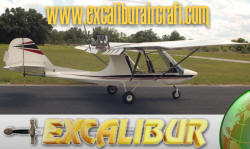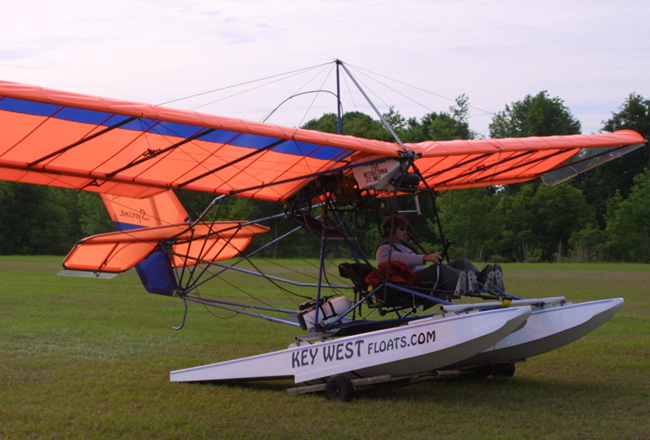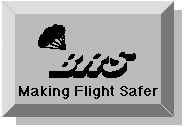Ballistic parachute history, the history behind ballistic parachutes for ultralights. |
|||||||||||
|
|||||||||||
|
Safety First: Free Dual Magnum strobe light with purchase of BRS parachute!!! |
|||||||||||
|
|||||||||||
|
|
|||||||||||
|
|
|||||||||||
|
|
|||||||||||
| Parachutes for ultralight aircraft and pilots: | |||||||||||
|
Webster defines "Pioneer" - as a person who experiments and originates, or plays a leading part in the early development of something. There have been many pioneers in the sport of ultralight aviation. John Moody, Dick Eipper, John Choita, Chuck Sluarscyk are just some of the names that come to mind. These names are all associated with aircraft designs, but at the same time that these new ultralight aircraft designs were being introduced, ultralight aircraft accessories were also being "pioneered." In the early '80s while attending Sun N Fun in
Lakeland Florida I met Jim Handbury, he was introducing a hand deployed
parachute system that could be used on ultralight aircraft. The unique
part about this system was that it was not designed to bring a pilot down,
but to bring the ultralight with the pilot on board down together!
But did it I was both astonished and amazed by this piece of video tape. First, it demonstrated just how strong the old Quicksilver MX really was, with Jim having to cut three of the flying wires before he could get the wing to fail! Secondly, it showed for the first time that I'm aware of, the plane and pilot could be safely brought down under parachute system. Thirdly, that this man believed in his product and was willing to demonstrate it, at great risk to himself. But it also demonstrated one other thing. It took nearly eight seconds for the parachute to deploy, which meant for it to work a pilot would have to have a considerable amount of altitude. At the next show that I attended Jim had another piece of video tape, again flying a Quicksilver MX, this time on floats over water. As I watched the Quicksilver entered the camera view, it was about 75 feet above the water, all of a sudden a loud bang, like a shotgun exploding, is heard and something is propelled away from the Quicksilver. It's a parachute, it fully inflates and brings both the pilot and aircraft down safely-in less than 75 feet! I came back from the show flabbergasted, I could not believe what I had seen. Here was a system that could save the pilot from structural failure at an altitude as low as 75 feet! I must honestly say that there were many times when I would look out at the end of the trailing edges of my old MX, and see them "flexing" and wondered just how strong they were! As the "Good Lord" (she seems to always be watching over me) would have it my wife caught me watching the video and asked me about it. She then told me to order one - it was my "birthday present" - and her peace of mind. I had the chute on several of my planes over the next couple of years. While I never had to use it - it was "nice to know" that I had it just in case. About this time I sold my chute and ordered a new one for myself and several customers. But never got delivery, Jim was killed in an accident where he was testing a chute on a 150 Cessna, it got caught up in the control system after being cut loose, causing the plane to crash. At about the same time as Jim was bringing his system on to the market another "Pioneer" by the name of Boris Popov was also experimenting with "ballistic recovery systems" for ultralights. Boris, was a hang glider pilot who had his own reasons for coming up with an emergency parachute recovery system - he had a wing failure and had survived! I met Boris at Oshkosh and was impressed by his "personality." I ordered a couple of chutes, got delivery astonishingly quickly - in about 6 weeks. I mounted the two place chute on my new Challenger and the single place on a little Lazair that I had purchased for resale, and just to fly low and slow with. Up until this time I had flown a great many ultralights but most of my dealings, and training was done on the venerable MX 11. While I had encountered problems with the design (check out Troubleshooting the MX), they were problems that others before me had encountered and thus I was aware of them and kept an eye open for them. The Challenger on the other hand was brand new to me, and the market - mine was the first production unit off the assembly line! A training environment is hard on a plane, you do more take offs and landings in a week than most pilots would do in a year. The cycles on parts and pieces is 20 times that of a one on one environment! So problems were encountered, reported to the factory and updated. Check out Troubleshooting the Challenger. At about 400 hours, while flying along at 3500 feet with a student, my trainer suddenly started to buffet, and then went into an uncontrollable porposing action. Looking back I could see that the horizontal stabilizer had failed and was flopping up and down in the wind, and thumping the elevator. The student came on the intercom to ask what was wrong - "turbulence" I replied! Slowing the plane down I found I could fly it at about 40 mph with the engine at an idle, and MOST of the "turbulence" would disappear. My first thought, once I got control back (that's right my initial reaction was to get control - I never even thought about the chute) was to deploy the chute, in fact I had already started to cock the deployment handle! Then I thought you have control, can fly the plane, so fly it! You won't believe how many things can go through your mind while coming down from 3500 feet, with a wounded bird - how many times you say "deploy the god damned chute." The panic that starts at your toes and works it's way up your legs -nearly paralyzing you! The amount of energy needed to fight it off would astound you! Anyways, to make a long story short, on the way down I tried several times to drop the nose to pick up a little airspeed, every time I did the plane would start to porpose violently. So I was forced to fly it in at between 35 and 40 mph into a 15 mph crosswind. At about 50 feet I had no choice the plane was about to stall, I shut off the engine, dropped the nose, then pulled back on the stick to try to level the plane, something let loose on the tail and the plane hit the ground. Should I have deployed the chute? As it turned out only the plane was damaged. But did I learn anything from the experience? The next summer I am flying along the lake in my Lazair, having a great time, skimming the water, waving to boaters, and doing what might be considered "mild aerobatics" when I come out of a sharp turn and level off into a flock of Canada Geese! One hits the right hand engine square on. The impact bends the engine upwards and crumples the D cell - the plane pulls to the right. I hit the ignition switches, and with full opposite rudder and aileron get the plane righted, for a few seconds! Then the wing fails - I am reaching - trying to find the parachute deployment handle.... I can't located it, I am spinning, disoriented, then all of a sudden it is in my hands - I pull it I hear the bang, feel a sudden impact as if something has grabbed me, and then another impact as the plane hits the ground, one wing low, and then the fuselage hits the ground. I break both my ankles but no other injuries! Does the BRS - Ballistic Recovery System work - the above is just one instance - there are over 150 others. Ultralight Aircraft News |
|||||||||||
|
|
|||||||||||
|
Attention: All BRS parachutes are special order items. Once an order has been placed it can not be cancelled or returned. |
|||||||||||
|
|
|||||||||||
|
|||||||||||
| Ultralight Aircraft News.ca Web Magazine. No part of this publication may be copied or distributed, transmitted, transcribed, stored in a retrieval system, or translated into any human or computer language, in any form or by any means, electronic, mechanical, manual, or otherwise, without written permission of Ultralight Aircraft News. By copying or paraphrasing the intellectual property on this site, you're automatically signing a binding contract and agreeing to be billed $10,000 payable immediately. Copyright Ultralight Aircraft News.ca EMAIL | |||||||||||
|
|||||||||||



